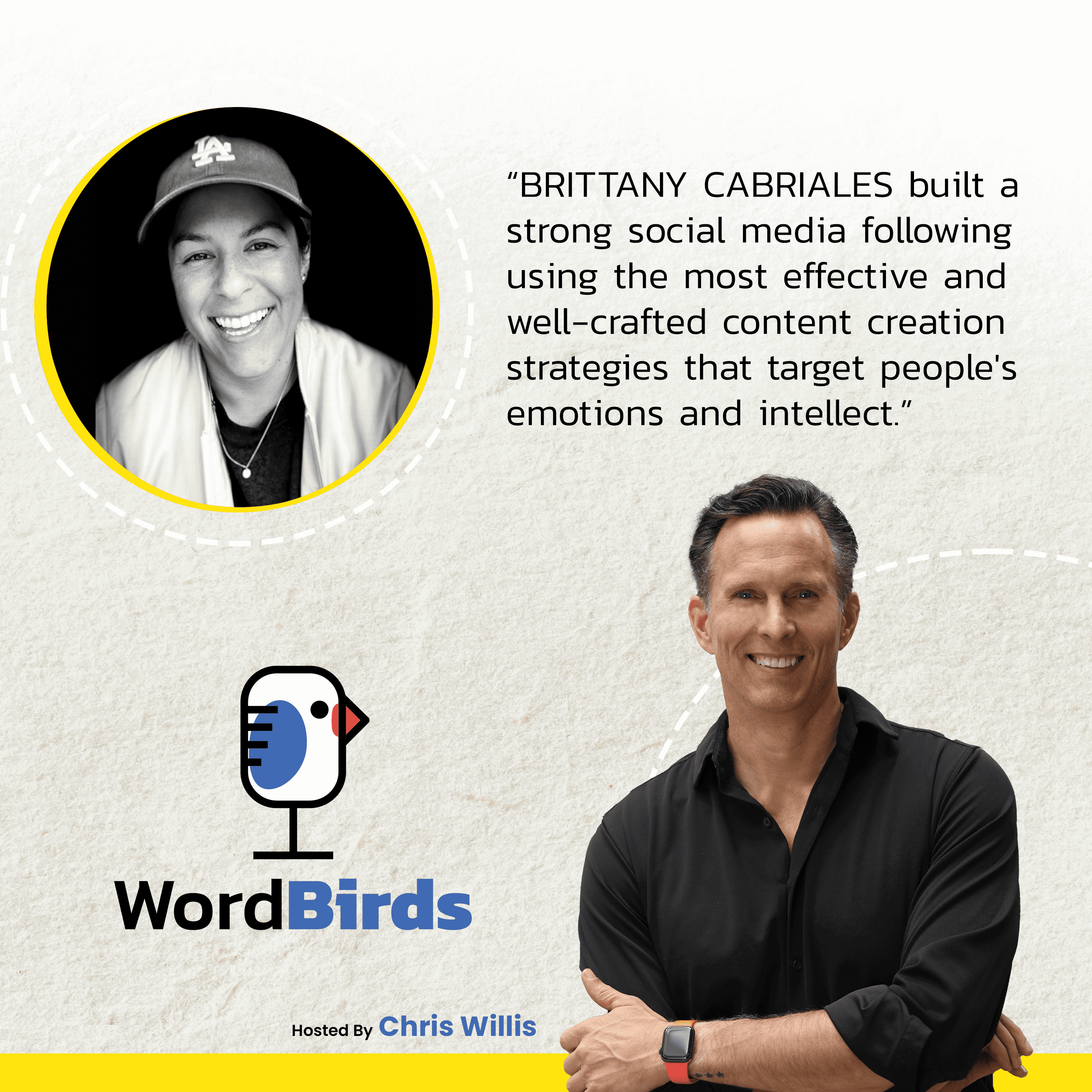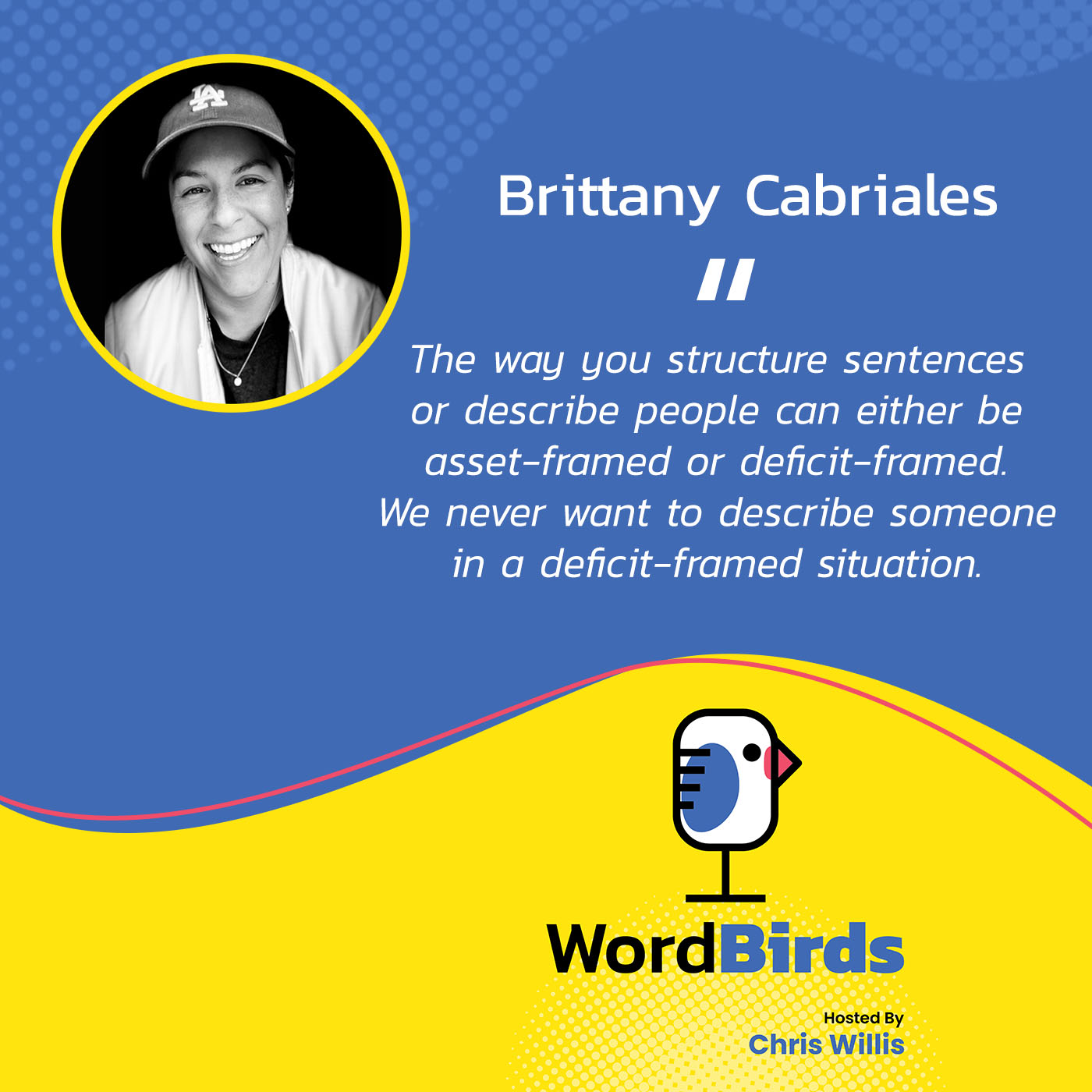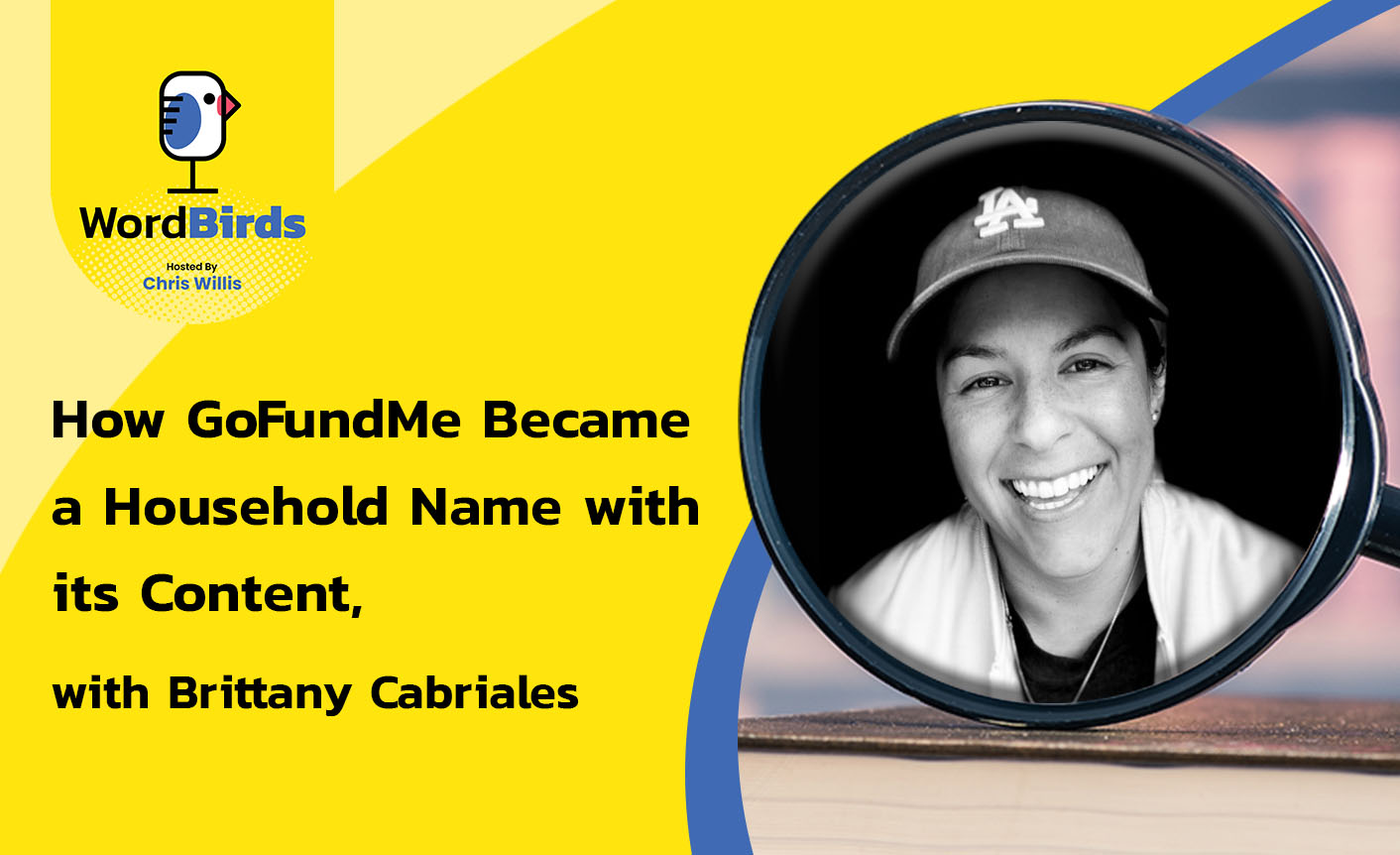If people are given a chance to support a noble cause, they will most likely respond positively and without delay. As we’ve seen with GoFundMe campaigns, especially since they come with engaging content that targets emotions.
Chris Wills chats with Brittany Cabriales to share content creation strategies that skyrocketed their GoFundMe following. She explains their RISE method, the secrets to intellectually stimulating storytelling, and the right way to integrate inclusive language. Brittany also shares what she wishes her CEO knows about her job and the most memorable projects they have done.
Watch the episode here
Listen to the podcast here
Read full episode transcript
GoFundMe, you’ve heard of it. You’ve heard of it because of the campaigns that they run. It’s been sent to you by friends or seen on social media. GoFundMe is everywhere. They came out of nowhere a few years ago, and they turned into something global and valuable.
In this episode, we have Brittany Cabriales, Head of Social Media. I’m really excited to talk to her. We’re going to be talking about things like the growth of social at GoFundMe. The way that they’ve grown from hundreds and thousands of followers to hundreds of thousands, potentially millions of followers. We’re going to talk about The RISE Method and how they identify the content that’s going to resonate around relatable, intellectually stimulating storytelling, and emotional content. We’re going to get into a little bit around inclusive language and how that drives engagement for GoFundMe. We’re going to talk about what Brittany wishes her CEO knew about her job that would make her job better and make it all more valuable, even more valuable to the company. Welcome to WordBirds, birds of a feather conversation between people that care about words. Let’s go get some insight from the flock.
Brittany, welcome to the show. I’m excited to have you here.
Thanks for having me.
There are so many things that I want to talk about, but in your role as Head of Social at GoFundMe, you’ve done things that most of us can only aspire to. You work at a business, one I would argue a large enterprise and you’ve built a real social following. You’ve taken it from hundreds and thousands of followers to hundreds of thousands, potentially millions of people following your social accounts.
As a B2B marketer, that’s the goal. I don’t know that anybody would give that to me as a goal because it seems so impossible, but that’s the vision. That’s what we all want. I’d love to understand the progression of what you found when you got to the company and what you did to build this level of success that you’ve attained.
I feel extremely lucky to be where I’m at now. Obviously, I’ve fallen into GoFundMe now since 2014, and to see the growth that we’ve had as an organization has been tremendous. I remember when I first started, my mom would ask me, “What is this company that you work for?” I’m like, “GoFundMe.” “I don’t know what that is.” Now I meet someone and I say, “I work at GoFundMe,” and they’re like, “Wow. That’s really cool.”
In terms of social and content, I’m extremely fortunate in GoFundMe and the platform. We have so many stories to tell. One thing we say internally is we probably have more content than Netflix does. It’s incredible the amount of stories that we have. We don’t have all the time to tell them, but we do our best to share the ones that are trending, super relevant and will warm your heart. Even the ones sometimes that are a little heartbreaking or a reflection of what’s happening in the world. We have a little bit of it all, depending on the moment we have something to pull from.
GoFundMe gets me every time. I’ve made a donation to people that I don’t know and I’ll never meet. There’s one that sticks out in my head. It was an older senior citizen woman down in the Cape. I’m in Massachusetts. Cape Cod is South of here. She was looking to stay in her house, and her neighbors built a GoFundMe for her, and it made the local media, at least here. Not only did the fundraising allow her to stay in her house, she qualifies as wealthy now as a result of this. That’s one story of something that made it beyond your website to the news and then reached out to people all over this area for the sake of fundraising. What an amazing tool that you have to turn something viral.
I absolutely love that you say that. One thing that we want everyone to experience at least once in their life, hopefully more, is that feeling. Internally, we call it the Helpers High. That’s what some industry insiders have coined for it and that warmth and happiness that you get from helping someone else. For being a donor. You could do that every day if you wanted to and we want everyone to experience that. At this point, but 1 in 10 people have given to a GoFundMe in America. That’s a small amount when you think about the amount of people that need help out there and the joy that you could be bringing someone else. We’re always looking to increase that number.
The fuel that you have to drive that engagement is amazing. The question is, you’ve built this community and grown this following. What’s doing it? I know the topics help, but what content is really generating the engagement that’s leading to this viral growth?
There are a couple of things that I try to look for when I’m coming through stories and looking for content. I always rely back on this thing that I read somewhere. I can’t remember exactly where I read it from, but it’s called The RISE Method. R stands for Relevance. Is it relatable? Does it have context? Will someone be able to read it and understand it? Does it have cultural significance? Is it approachable? Having all of that tied to a piece of content is very important to make sure that it takes off. I is, is it intellectual? Is it intellectually stimulating? Does it provide value? Is the person reading it learning something?

Does it make them go wow? Does it make them stop and go, “I didn’t know that. I want to share and like that?” S is Storytelling. Is it authentic to your brand and what do you want people to take away from the content? My CMO, Musa, always talks about bricks as content. You can put a content brick here and a content brick there, but what you really want to do is you want to stack the bricks so that they’re all leading to something bigger. The last one is Emotion. Does it make someone feel something? It can make them feel inspired, in awe, surprised, or loved, whatever you want to make it. It’s something that feels memorable and creates a deeper connection to your brand.
That’s RISE. I don’t think it has to be all four of those, but if it can have at least 1 or 2 of those, the more, the better. You’re probably going to have a better piece of performing content. When I’m looking for content for GoFundMe camapigns, I’m trying to find pieces of that. What’s going on in the world right now? How can we tie a funder to a donor?
For instance, not too long ago, there was a big milk shortage that was happening. I don’t know if you remember that, but finding a GoFundMe fundraiser that you can support to help provide baby formula to mothers around the country who can’t access it because of where they are or they can’t afford it. Finding those moments in a culture that are happening and tying them back to ways that you can actually do something to help.
There is no shortage of purposes right now, probably more than we need out there and keeping people busy on this. I love the idea of this, and sitting here, I’m trying to think, in my own business, how I would overlay this RISE Method over the content that we’re creating. Any business can find a pathway with this particular approach. It takes creativity.
Let’s say you’re selling semiconductors. What do you do that’s relatable or emotional? I bet you can find something. That’s the difference between posting product information and hoping that people click on it. Heads up, social people. They’re not going to versus being a storyteller and tying the things back, for instance, the results of your product or your service that impact an individual or people to try and tell a better story, a story that people care about.
As you said, it is intellectually stimulating enough to want to share. I want to show people that I saw this and I want them to see this. That’s how this all is supposed to come together. Again, this is the goal. On this show, we have an objective of a number of subscribers, but it’s not what yours are. It’s a number far smaller, but that’s how all this starts.
Maybe someday, people tuning in to this will be in the millions. We can only hope. As a socially aware business like GoFundMe is, as you’re creating your content, the hot topic now is inclusive language. The problem is it changes rapidly. How are you dealing with that? How are you making sure that the content that you’re creating isn’t off-putting to the audience that you’re creating it for?
There are a couple of things that we can do. The first is listening to your community. How is your community talking about this thing? What do they call themselves? How do they describe this thing? You can take a lot of inspiration from how people in that community talk about themselves. The second thing we try to do is, as a team, like the social team, copywriting team, and brand strategy team, we try to be very aware of asset framing.
We had a talk about this internally because it’s good to remind yourself every so often about this. The way that you structure sentences or describe people can either be asset-framed or deficit-framed, and we never want to put someone or describe someone in a deficit-framed situation. A very basic intro to this would be describing someone as a homeless person versus a person experiencing homelessness. Homelessness should never be the deciding trait of this person. It’s something they happen to be going through right now and doesn’t define them. That’s definitely something we always try to keep top of mind as we’re writing copy, sharing content, etc.

It’s interesting because it doesn’t necessarily jump out at you as you’re creating content. In some cases, in inclusive language management, there are things that we say every day that we’ve set our entire lives without knowing that they’re damaging. For us, at least, it’s not enough to point out the issue. It’s explaining the issue because if you say don’t say it, I won’t say it. It doesn’t necessarily make me a better person and open my mind at all. It just says don’t say it. It’s saying, “Don’t walk into the wall. Don’t do it.”
There’s a big moment happening in culture right now with also being able to stand up and saying like, “We messed up. I said this and I shouldn’t have. I learned about it and I’m more educated now than I was when I wrote this.” With Lizzo and what happened with her lyrics and Beyoncé. It’s standing up, taking accountability, learning, moving forward from that, and knowing that, “We’re sorry we did this. It won’t happen again.”
People nowadays have learned to stand up, take accountability, and learn from their mistakes moving forward. Share on XIt’s guiding people to say, “If I don’t want you to say this, this is why.” This is a good potential opportunity to change. That changes the whole dynamic. It isn’t content governance anymore. It’s education. It’s mind expansion around sensitive topics that should, in the end, make people better. It’s happening in our content organizations and it’s broadening out across businesses because content governance is a thing in many cases. If you find it once, you try and get everybody to onboard if I can educate them at the same time. The one that always comes back is something about the peanut gallery. What’s the problem with that? There is one, and let’s explain what the problem is.
It’s the cheap area of the theater that people were relegated to. You think it’s nothing and it’s a thing that your mom said when you were a kid, which, to be fair, probably is, but none of you knew where it was coming from in the 1940s. This is why. Now you have a choice. You can continue to say it knowing full well why it’s damaging or you cannot. That’s the way that this moves forward.
We’ve spent a lot of time over the pandemic period not just building software around inclusive language but thinking about how to implement all of this software or not in the enterprise so that businesses can be better. It’s not something that you see on social. It’s something that goes well beyond marketing content into every part of the business.
It’s in code. Inside the source code of the software that everybody uses, there’s problematic language. It wasn’t put there to be damaging and hurtful. It’s how software development started. Being able to go in and manage this across the business has become a really big deal. It’s critical to what you’re doing because you’re building this community of people who want to feel included and feel good when interacting with you, which becomes really important.
You’re a person that works at a company. You probably report to somebody that reports to the CEO of a big valuable business. A question that I like to ask is what do you want your CEO to know about what you do that would make it better for you, doing what you do, and would make it better for the company if that person knew?
What’s unique about working in social is that everyone is on social media. Everyone thinks that they know what’s best and take it in every day. They’re like, “Here’s what you should do because I saw this. My cousin is doing this, so we should try this.” Everyone has an opinion. If more people realize how nuanced working in social is, there would be so much more respect for the amount of work and research and the time it takes to get to a place where you can work this as a full-time job.
I feel like I would want to voice to my CEO that it’s not as easy as it appears. Every time someone engages with one of our posts, it’s a one-on-one interaction that we’re creating. That is important. It matters. Every one-on-one interaction is meaningful and it matters to the brand. How we phrase something matters. The photo that we use matters. The way that it’s viewed in a feed matters. I would say that it’s a lot more difficult than one would think.
That would be, “My kid is on Facebook. I’ll bet maybe you could have them work for you.”
The ongoing joke is that we’re all interns.
That’s a cute joke. I’ll bet you enjoy that after years of building success inside the business and driving the value of the business based on the community that you’ve generated. Interns and kids are playing on Facebook. What you’re speaking to is the overall strategy of social and business and the reason that companies are willing to spend money on this. It’s not putting up cool headlines and reprints of your press releases.
It’s a cadence of planned content to drive awareness, engagement, donations, and community. It’s more than people think it is. That’s a great message for any CEO out there, salespeople, and sales management, “I know how to market. I’m a marketer myself.” “Are you? Neat.” It’s different than that and putting that strategy work in place that drives real success. I have to imagine that your CEO probably knows that you’re doing quite well based on the size of your community. Last thing, an example of something that you’re really proud of recently. What’s a campaign or a fundraiser that you’ve done that you think is awesome?

I feel I would have to say we did a stop Asian hate campaign in 2021, and it was one of the most fun and rewarding things to work on. We approached this campaign in a different way than we ever had done anything else in GoFundMe’s history. We contacted several very influential people within the Asian-American space, actors, designers, and fashion people.
We got them on a call and we were like, “What needs to happen right now? What do you think needs to happen and how can GoFundMe support that?” That allowed us to create the framework for a very well-built and thought-out fundraising campaign. We launched and it was shared by dozens and dozens of celebrities, musicians, and people that we didn’t even contact or work with but because they wanted to be a part of something bigger than themselves.
A GoFundMe campaign can be considered successful if it is shared by dozens of prominent people who want to be part of something bigger than themselves. Share on XThat campaign went on to raise several million dollars. It’s probably close to $8 million or $9 million now. To see the impact we were able to make was one of the most rewarding things for me. It was amazing to work on. Another fun one. We had a single post that we did for last GivingTuesday. For those who don’t know GivingTuesday, it’s the biggest day of philanthropy in the world. It comes after Black Friday and all of those holidays where people are spending money on themselves and it’s encouraging a day of giving back and giving to a charity.
In 2021, we did a choose-your-own-adventure-style tweet, which was fun and interactive. You could click through the tweet and go down different rabbit holes of what we thought you should give to based on your answers to specific questions. That one was so fun to work on. It resonated with not only other social people that I know but random people who follow us. They were like, “This is amazing. We need more of this.” Even the GivingTuesday account commented on it and said that they loved it. That was super fun to work on.
I feel like I’m learning things. That’s a really neat idea. It’s technically not difficult. It’s just, again, back to that strategy of knowing what you want to do, how you want this to play out, and where you want people to end up. It’s a remarkable approach towards a thing that everybody thinks they know how to do, but only some people are doing well. I’m very excited about the things that we’ve talked about. If people are reading this, what’s the best way to get ahold of you? I assume the best way to get through to you is probably LinkedIn. Are you on LinkedIn?
I’m on LinkedIn. I’m also pretty active on Twitter. You can follow me @Brit_Cab.
Britney, thank you so much for being on the show. People are going to get a lot of value out of this.
Thanks for having me. It was so much fun.
Important Links
- GoFundMe
- The RISE Method
- GivingTuesday
- LinkedIn – Brittany Cabriales
- Twitter – Brittany Cabriales
- LinkedIn – WordBirds
- WordBirds – Home page
About Brittany Cabriales

Brittany Cabriales is a creative social strategist perfecting the art and science of meaningful marketing & branding. Since 2014, she’s taken the GoFundMe social channels from several thousand followers, to a community of millions. Every day, she and the GoFundMe team use data-driven insights and real-time trends to create content that is inspiring, educational, or builds an emotional connection to the brand.


